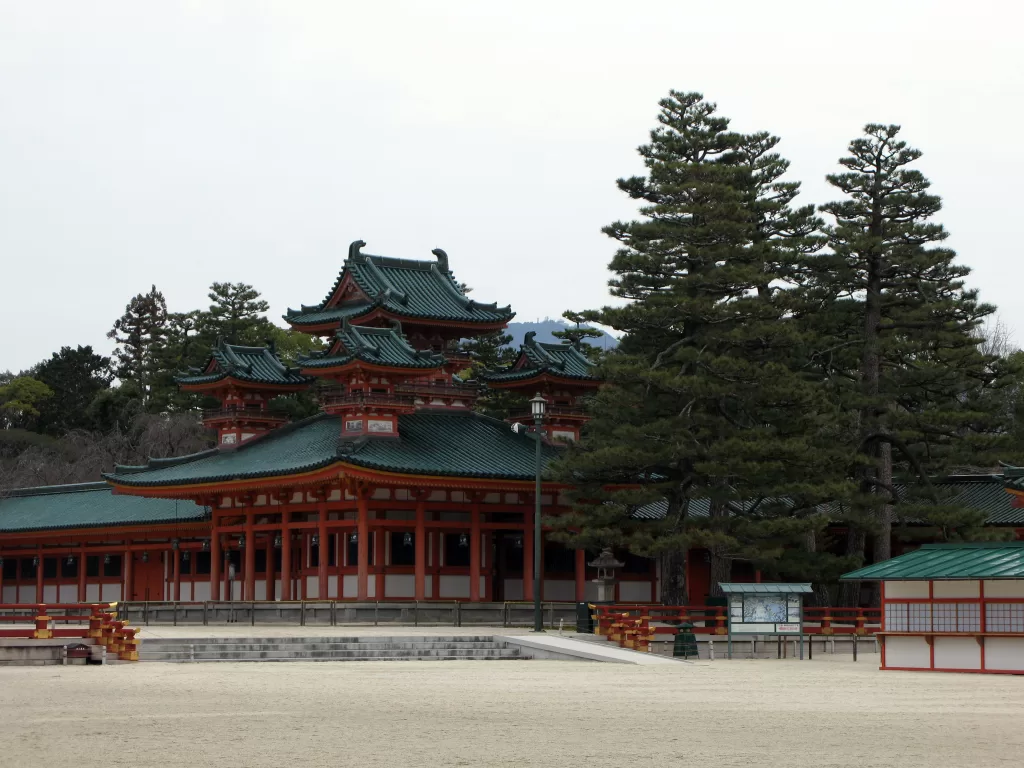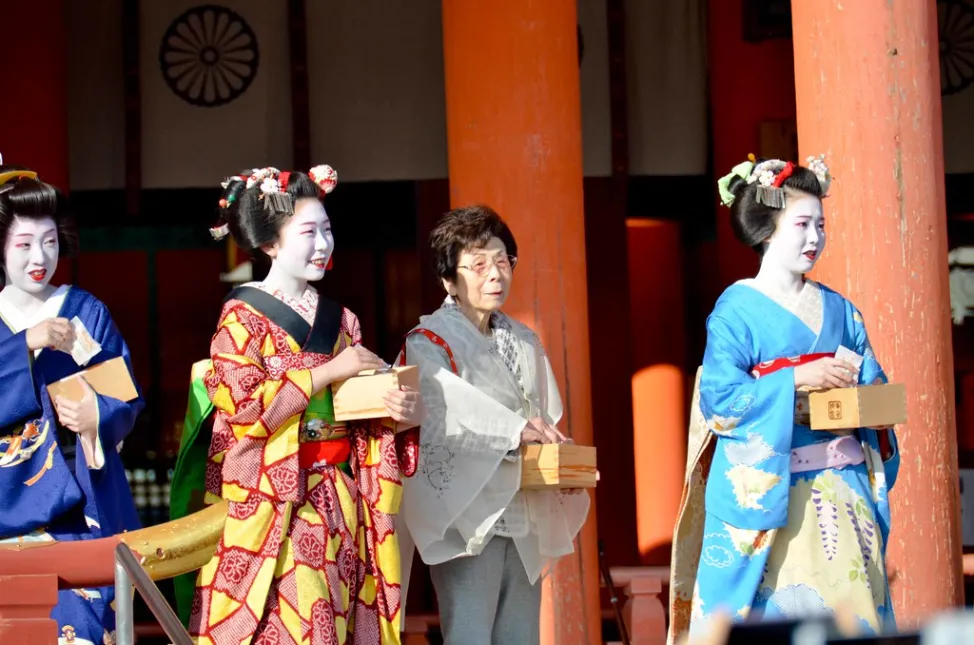Heian Jingu Setsubun Festival Marks Spring Arrival with Exorcism and Luck Rituals

The Heian Jingu Setsubun Festival is one of Kyoto’s most famous Setsubun celebrations. Known for its rituals designed to rid the environment of evil spirits and beckon in the spring season, the Heian Shrine offers a unique, spiritual experience for locals and tourists alike. It’s one of the best-known Kyoto events in February.

Symbolic Rituals To Oust Evil Spirits
Set to commence at 1pm, the festival begins with priests performing a sacred Shinto ritual at Heian Shrine’s inner sanctuary. These purification rites involve offering gifts to the gods on the altar, reading prayers aloud and other cleansing actions aimed to set an auspicious tone for the rest of the day.
As part of the exorcism performance known as Daina no Gi, individuals dressed as warriors, onmyōji diviners, and Hōsōshi (demon-quellers) put on face-masks symbolizing oni (demons in Japanese folklore). This annual event pays homage to rituals once performed in Kyoto’s Imperial Palace during the Heian period.
At around 2pm, revellers get a chillingly entertaining scare as men donning fearsome ogre masks burst into the shrine and terrify everyone in the courtyard, moving towards the main hall veranda. In a delightful turn of events, the leader of this terrifying troup performs a victorious dance.
Lucky Bean Throwing To Invite Good Luck
Seemingly spontaneously, shrine parishioners appear wielding lucky beans–the star of mamemaki tradition (bean throwing)–shouting “oni wa soto, fuku wa uchi” (bad luck out, good luck in). The aim is to purge the shrine of these ill-intending oni. The imagery created is that of driving bad luck out and inviting good fortunes into attendees’ lives.
Subsequently, participants eagerly gather around the main hall hoping to catch packets of fortunate beans released into the crowd by priests and parishioners. In an interesting twist that harmonizes tradition with social nuances –geiko and maiko dresses are often worn by celebrities who join these bean-throwing festivities.
A Concluding Fire Ritual
Just as dusk hits at 4pm, a concluding fire rite ceremoniously referred to as ōhitaki shinji takes place—a spectacle revered as one of Kyoto’s most exciting highlights.
The Heian Jingu Setsubun provides guests with an array of traditional rituals from start to finish which not only entertain but encapsulate Japan’s deep historical roots that pave their cultural identity today.
The Yasaka Shrine Setsubun Festival in Kyoto is another delightful blend of tradition and spectacle. This renowned festival, held annually on Setsubun Day and its preceding day, offers visitors a chance to learn about the rich cultural heritage of Japan. Rooted in ancient traditions dating back to the Nara period, the Setsubun Festival at Yasaka Shrine is a captivating event designed to drive away evil spirits and invite good luck. The festival’s highlight is the Maiko’s elegant “Buyo-hono” dance performance.